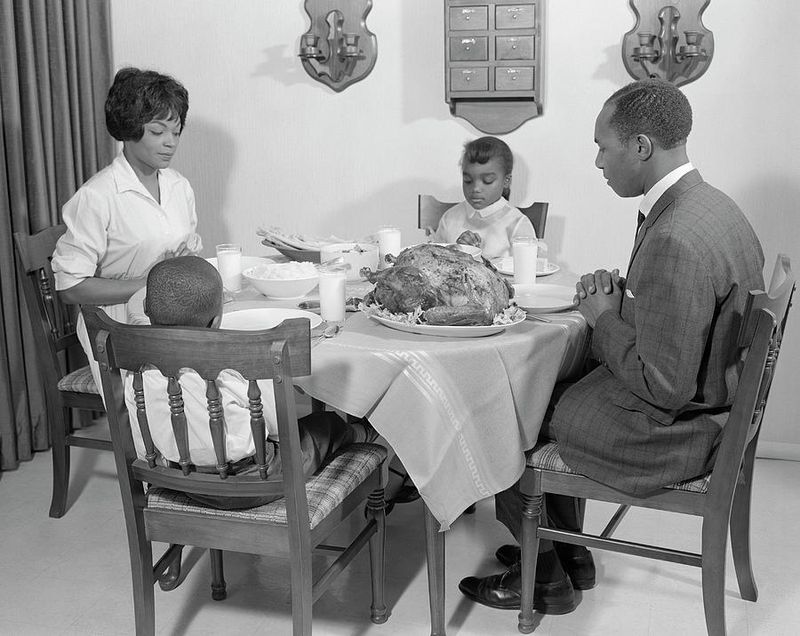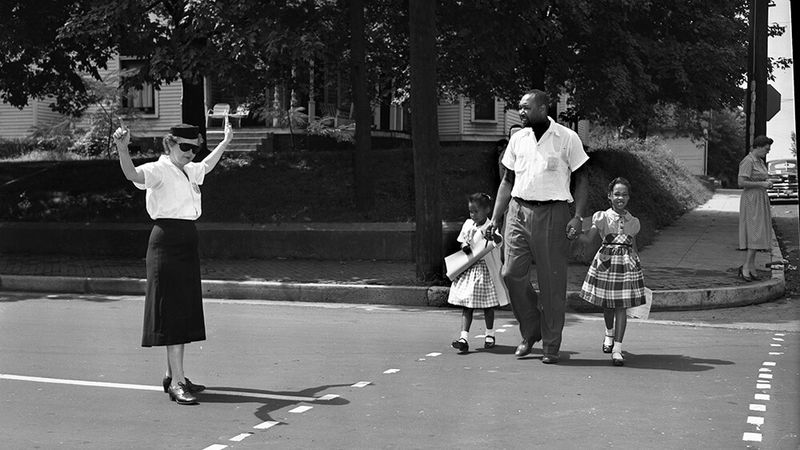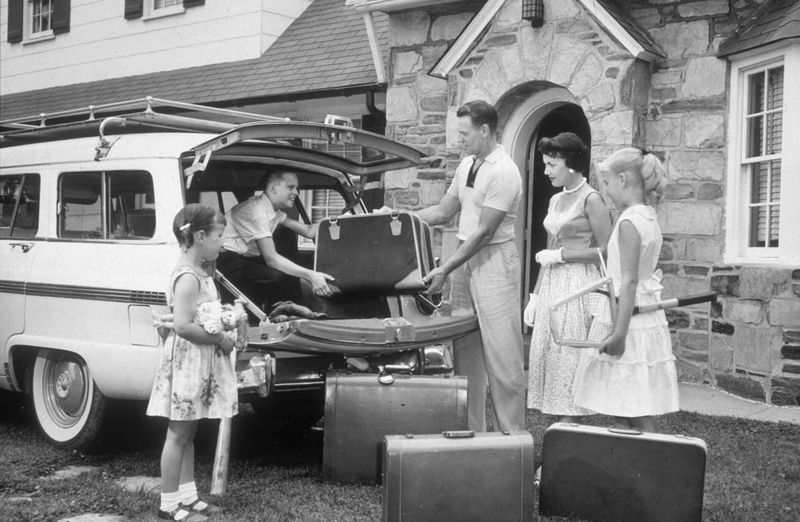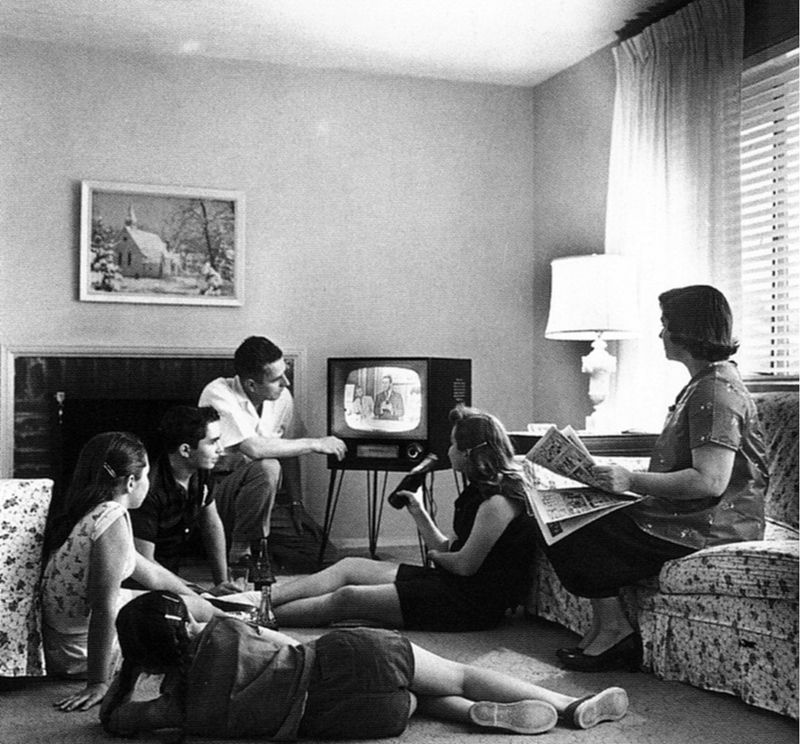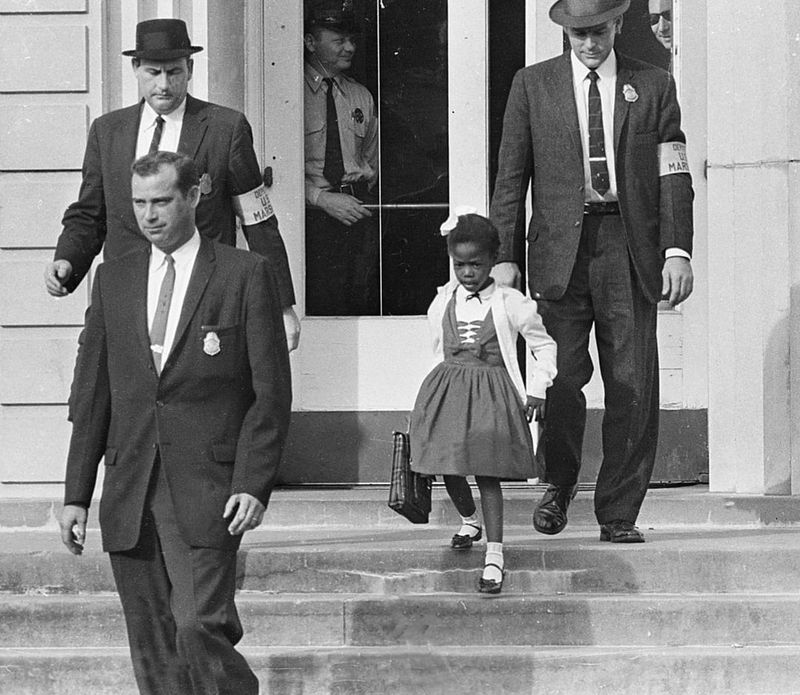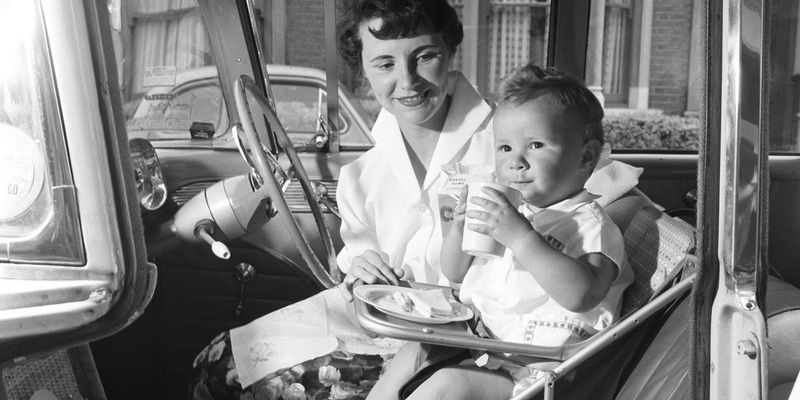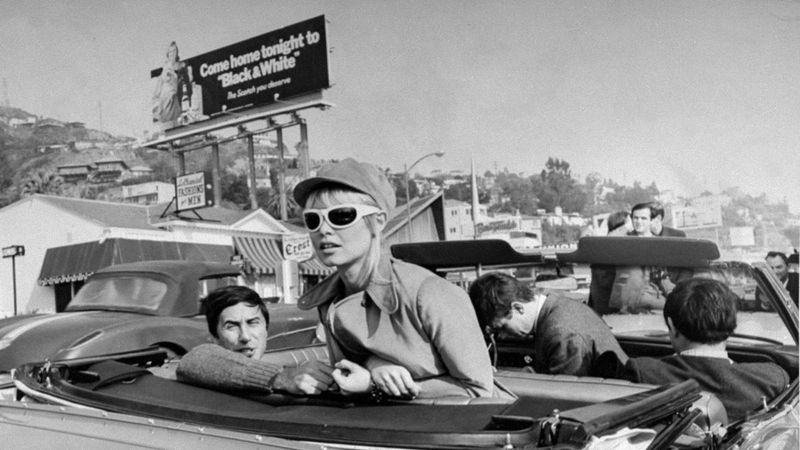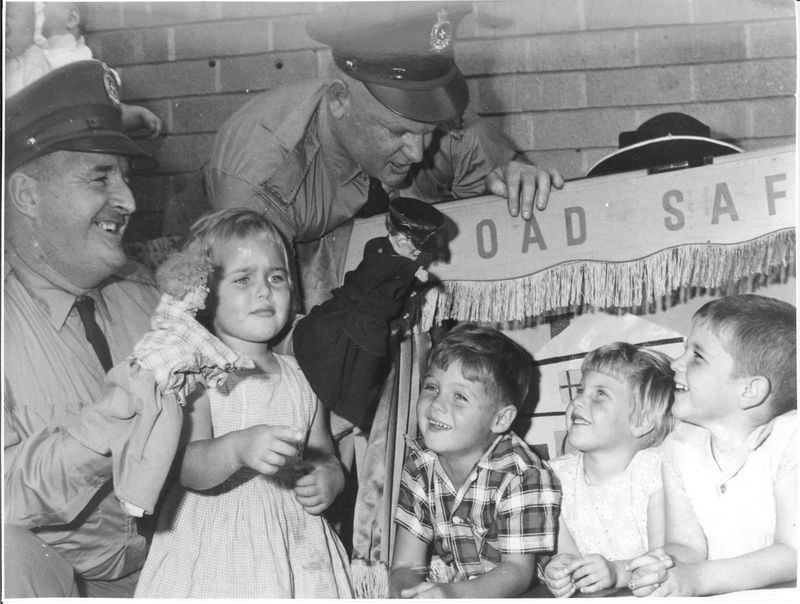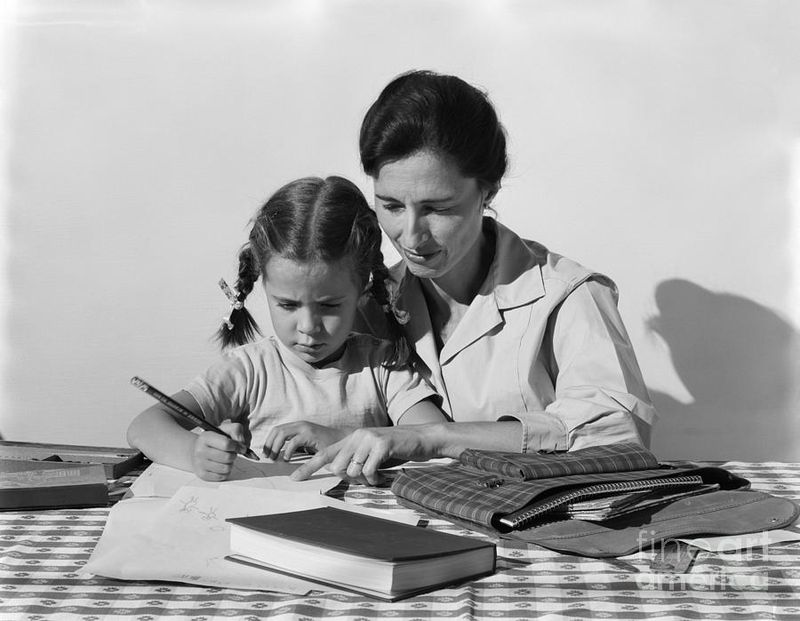The 1960s were a time of social change and cultural evolution, yet family values and household expectations remained steadfastly firm. Parents of the era established clear and unwavering rules to raise well-behaved children, instilling respect, responsibility, and discipline.
The following list delves into 18 strict family rules from the ‘60s that contributed to nurturing better-behaved kids compared to today’s standards. From structured dinnertime routines to non-negotiable chores, these guidelines reflect a bygone era of parenting that many look back on with nostalgia and reverence.
1. Dinner time meant everyone sat at the table—no excuses
Dinner time in the 1960s was a sacred family ritual. The entire family gathered around the dining table, where the day’s events were discussed amidst clinking cutlery. No distractions, like television or phones, interrupted this valuable time. The routine was set in stone, and everyone participated, regardless of their schedule or mood.
Parents believed that sharing a meal reinforced family bonds and provided an opportunity to instill manners and values. It was a moment for teaching etiquette, such as chewing with mouths closed and passing dishes politely.
These dinners were more than just meals; they were a cornerstone of family life, creating a sense of unity and belonging.
2. Kids spoke after adults were done talking
In the 1960s, children were taught the virtue of patience by waiting for adults to finish speaking before chiming in. This respectful pause wasn’t just a rule; it was a lesson in listening and understanding the flow of conversation. It instilled a sense of discipline, teaching youngsters that their turn would come.
Parents encouraged this behavior to foster a respectful dialogue where every voice was valued, albeit in its own time. It was a subtle yet powerful way to cultivate respect for elders and peers alike.
This practice not only enhanced communication skills but also taught children the art of observation, making them keener listeners and more thoughtful respondents.
3. Chores weren’t rewarded—they were expected
In the ‘60s, chores were a non-negotiable part of daily life for children, viewed as contributions to the family rather than tasks deserving rewards. Parents expected kids to complete household duties without expecting anything in return, instilling a strong work ethic from an early age.
This expectation developed responsibility and accountability, with children learning the value of teamwork and cooperation. Chores ranged from tidying their rooms to assisting in the kitchen, fostering a sense of pride in contributing to family well-being.
By making chores a regular routine, parents reinforced the idea that everyone had a role in maintaining the household, creating a sense of belonging and shared responsibility.
4. Saying “please” and “thank you” wasn’t optional
Politeness was a cornerstone of 1960s upbringing, where phrases like “please” and “thank you” were fundamental, not optional. Parents drilled these courtesies into everyday interactions, emphasizing respect and gratitude in all communications. Manners were seen as a reflection of character, shaping how children interacted with the world.
These expressions of civility helped children build positive relationships and navigate social settings with ease. They were taught that politeness wasn’t just for adults but was equally important among peers.
The habitual use of these phrases became second nature, grounding children in a culture of respect that transcended home life and extended into schools and social gatherings.
5. Sundays were reserved for family and rest
Sunday in the ‘60s was a day of rest and family togetherness, a sacred pause from the week’s hustle. Families spent time together, engaging in leisurely activities like picnics, board games, or simply lounging with a book. This day off from chores and work was a chance to rejuvenate and reconnect.
The emphasis was on relaxation and savoring time with loved ones, reinforcing familial bonds. Parents encouraged activities that fostered closeness and creativity, turning Sundays into cherished memories.
This tradition emphasized the importance of balance, offering a restorative break that rejuvenated the spirit and prepared everyone for the week ahead, cultivating a strong sense of family unity.
6. Television was limited to certain hours
Television in the 1960s came with strict viewing hours, reflecting parents’ desire to prioritize real-world interactions over screen time. TV was a shared family experience, often watched together after dinner, with specific programs chosen carefully.
This limitation encouraged children to seek entertainment elsewhere, such as playing outside or reading. It was a rule aimed at preventing excessive screen time, promoting creativity, and ensuring schoolwork wasn’t neglected.
By controlling TV hours, parents fostered an environment where imagination flourished, and children learned to balance leisure with responsibilities, creating a more active and engaging childhood experience.
7. Homework came before play, every single day
The mantra of the ‘60s was clear: homework always came before play. Parents enforced this rule to stress the importance of education and responsibility. Children knew that leisure activities were a reward for completing school assignments, instilling discipline and time management skills.
This practice ensured that academic responsibilities were prioritized, fostering a dedicated approach to learning. It taught children to manage their time efficiently, balancing work and play effectively.
By embedding this routine into daily life, parents created a structured environment where education was valued and goals were consistently achieved, paving the way for successful lifelong learning habits.
8. Kids addressed adults as “sir” or “ma’am”
Respectful address was a hallmark of the 1960s, where children learned to use titles like “sir” and “ma’am” when speaking to adults. This practice signified respect and acknowledgment of authority, setting a tone of politeness and formality in interactions.
Parents believed this formality helped children understand social hierarchies and the importance of courtesy. It was more than just a rule; it was a foundational aspect of upbringing, influencing how children interacted beyond the immediate family.
These titles weren’t just about respect; they were about building relationships based on honor and understanding, traits that resonated through all aspects of life.
9. Talking back was met with serious consequences
In the 1960s, talking back to parents or elders was met with firm consequences. This rule underscored respect and obedience, teaching children that words mattered and had power. Parents saw this as essential for instilling discipline and ensuring family harmony.
Reprimands for backtalk varied, but they consistently conveyed that disrespect wouldn’t be tolerated. This approach taught children to express themselves thoughtfully, fostering a respectful dialogue.
It was a lesson in self-control and humility, reinforcing the idea that communication should be conducted with care and consideration, creating a home where mutual respect thrived.
10. Siblings shared bedrooms—and learned patience
Sharing bedrooms was common in the ‘60s, teaching siblings to coexist peacefully and with patience. This arrangement fostered a sense of camaraderie and compromise, as children learned to navigate shared spaces and resolve conflicts amicably.
Parents saw this as an opportunity to teach cooperation and communication. Siblings became confidants and playmates, building lifelong bonds through shared experiences.
While privacy was scarce, the lessons in empathy and teamwork were abundant, shaping personalities that valued collaboration over competition. These shared spaces were the backdrop for countless memories, from late-night whispers to morning routines.
11. Saving up allowance taught financial responsibility
Earning an allowance in the ‘60s wasn’t just about pocket money; it was an early education in financial responsibility. Children were encouraged to save part of their allowance, teaching them the value of money and delayed gratification, a key lesson in fiscal prudence.
Parents often tied allowances to chores, reinforcing the link between work and reward. This practice instilled a sense of accomplishment and financial independence, guiding children to budget wisely and plan for future purchases.
The habit of saving fostered an understanding of financial priorities, laying the groundwork for responsible money management that carried into adulthood.
12. Children didn’t interrupt adult conversations
In the 1960s, interruptions by children during adult conversations were frowned upon, teaching the importance of patience and respect. This rule emphasized the value of listening skills and the art of knowing when to speak.
Parents believed in fostering an environment where children understood the significance of dialogue and learned by observing adults. This practice was more than just a lesson in manners; it was about nurturing curiosity and thoughtful participation in conversations.
By learning to wait, children developed a deeper understanding of social dynamics, enhancing their communication skills and appreciation for others’ voices.
13. Eating what was served without complaints
The rule of eating what was served was a staple of the 1960s dining experience. Children were taught to appreciate the meals prepared for them, fostering gratitude and openness to trying new foods. Complaints were seldom tolerated, emphasizing respect for the effort put into cooking.
Parents saw mealtime as an opportunity for lessons in humility and acceptance. Children learned to be less picky and more willing to embrace variety and cultural traditions.
This rule was about more than just nutrition; it was a way to instill respect and gratitude that extended beyond the dinner table, nurturing a positive attitude towards life’s offerings.
14. Family outings meant dressing appropriately
In the ‘60s, family outings were occasions that called for appropriate dress, reflecting the era’s emphasis on presentation and pride. Children were expected to don their best outfits, understanding the significance of dressing for the occasion.
This practice instilled a sense of respect for both the event and the individuals they would encounter, enhancing self-esteem and confidence. Parents taught that how one dressed was a reflection of self-worth and consideration for others.
Dressing appropriately was an expression of respect and a lesson in the importance of making a good impression, which extended into everyday interactions and milestones.
15. Curfews weren’t negotiable under any circumstances
Curfews in the 1960s were non-negotiable, underscoring parental authority and concern for safety. This rule was about more than just a time limit; it was a demonstration of responsibility and trust between parents and children.
Adhering to curfews taught punctuality and the importance of respecting family boundaries. It was a way for parents to ensure their children’s safety while granting them freedom within structured limits.
The unyielding nature of curfews reinforced the idea that rules existed for a reason, cultivating an understanding of responsibility and the importance of balancing independence with accountability.
16. Parents were always right (or so they believed)
In the 1960s, the belief that parents were always right was a commonly accepted norm. This sentiment emphasized respect for parental authority and wisdom, teaching children to trust their elders’ judgment.
While it might have seemed rigid, this approach fostered a sense of security, knowing that parents had the family’s best interests at heart. It encouraged children to listen and learn, appreciating guidance and experience.
This rule wasn’t about infallibility but about nurturing trust and understanding within the family, creating an atmosphere where children felt supported and guided in their upbringing.
17. Respecting elders was drilled in from day one
Respect for elders was a fundamental lesson taught from an early age in the 1960s. This principle was deeply woven into the fabric of daily life, emphasizing the importance of honoring those who came before.
Parents instilled this respect through words and actions, teaching children to address elders properly, assist them when needed, and value their wisdom. It was a lifelong lesson that fostered community and continuity.
By embedding this respect in everyday interactions, children grew up with a sense of tradition and reverence, understanding the importance of acknowledging and learning from past generations.
18. Privacy wasn’t really a concept for kids at all
In the 1960s, privacy for children was minimal, with parents often aware of most aspects of their lives. This lack of seclusion was not seen as intrusive but as a protective measure, ensuring safety and guidance.
Parents’ involvement in their children’s lives was a way to foster a nurturing environment, where guidance and support were readily available. This oversight taught children accountability and trust within family dynamics.
While modern perspectives might view this differently, it was a reflection of parental care, aimed at creating a close-knit family where children felt secure and supported in their growth and development.


